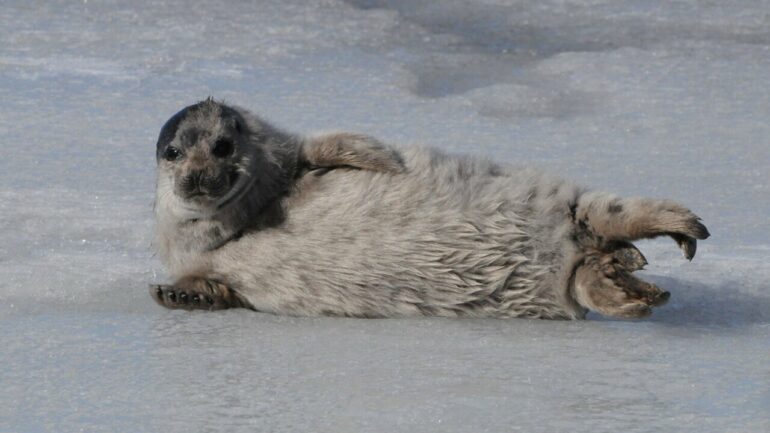A new study confounds conceptions about the origins of the Saimaa ringed seal. In addition, scientists have observed that the genetic diversity of the Saimaa ringed seal decreased in the 20th century as a result of human actions. The evolutionary history of the Saimaa ringed seal was investigated from the DNA of museum specimens in a study conducted by the University of Oulu, Finland, and several international universities.
The Saimaa ringed seal (Pusa hispida saimensis) lives only in Lake Saimaa, Finland, where, according to previous information, it has been thought to have been isolated from other seals approximately 9,000 years ago due to the post-glacial land uplift that cut off the connection to the Baltic Sea. The results of the new study do not seem to support the traditional understanding.
The surprising research results were achieved when comparing the Saimaa ringed seal’s historic mtDNA sequences to the sequences of other ringed seals. According to phylogeny, the Saimaa ringed seal does not seem to be closely related to the current Baltic ringed seal. The results suggest that Saimaa seals are nested within the Arctic, and more specifically North American, ringed seal genetic diversity. The current ringed seal from the White Sea, which is geographically the closest Arctic population, does not seem to be closely related to the Saimaa ringed seal. This seems to apply also to the Ladoga ringed seal, which is scattered around the ringed seal family tree.
“The research results could be explained if ringed seal has had several colonization waves into the Baltic Sea and that, at times, the species had disappeared from there. As a result, the Saimaa ringed seal could represent the descendants of the Baltic ringed seal from a previous colonization wave that migrated to Lake Saimaa,” says Jouni Aspi, Professor at the University of Oulu.
Matti Heino, Postdoctoral researcher at the University of Helsinki, continues, “An alternative explanation is that the Saimaa ringed seal originates from a lake situated on the edge of the ancient Fennoscandian Ice Sheet. This theory is supported by the fact that these kinds of refugia have been identified in other species, such as salmon, grayling and perch. However, there is no certain evidence of this, and clarifying the origins of the Saimaa ringed seal requires further research.”
Genetic diversity is important to survival in changing environments: In the Saimaa seal it has collapsed
“A thought-provoking fact in the study is the now documented bottleneck in the Saimaa ringed seal population caused by human actions in the 20th century and the collapse of genetic diversity, which has previously remained unclear,” Aspi states. Previously, it was known that the genetic diversity of the Saimaa ringed seal was extremely low when compared to other seals—or almost to any other mammal. Low genetic diversity may harm the ability of species to adapt to changing circumstances.
However, previously it has not been possible to specify the point in which the genetic diversity has started to decrease. In genetic simulations, the decrease in diversity has been seen as an extremely slow process. The purpose of the study based on museum specimens was to provide a more detailed estimate on how the genetic diversity has changed over time.
“The research analysis revealed that the Saimaa ringed seal population has possibly decreased slowly since the 1100s, but with a more drastic fall in the population taking place since the second half of the 19th century. At the same time, the genetic diversity of the population clearly started to decrease,” Heino confirms.
The Saimaa ringed seal population collapsed because of human actions in the 20th century. The number of seals has increased slowly, and the remaining 400 seals are still extremely endangered. The greatest threats include drowning because of fishing nets, climate change, human-induced harassment and the low genetic diversity in the small population.
The new study was published in the scientific Ecology and Evolution journal on January 18, 2023.
More information:
Matti T. Heino et al, Museum specimens of a landlocked pinniped reveal recent loss of genetic diversity and unexpected population connections, Ecology and Evolution (2023). DOI: 10.1002/ece3.9720
Provided by
University of Oulu
Citation:
Genetic diversity of the Saimaa ringed seal decreased in the 20th century as a result of human actions: Study (2023, January 30)



